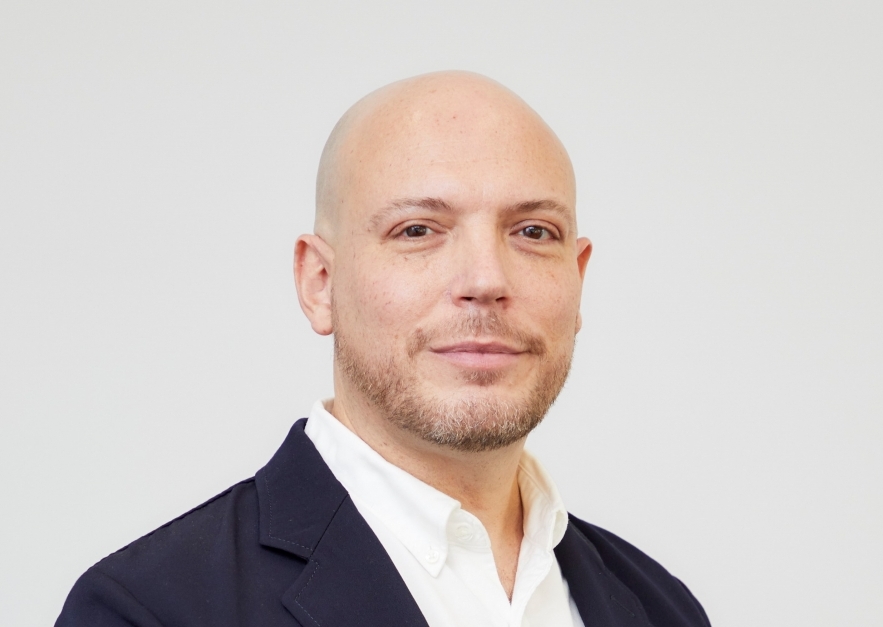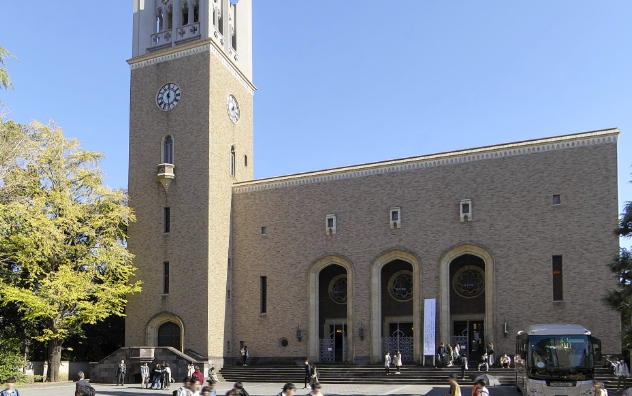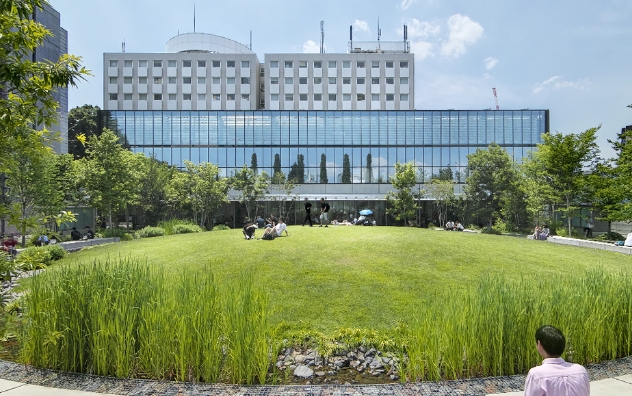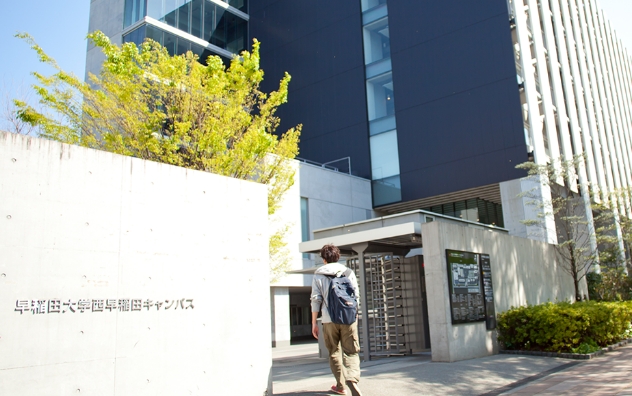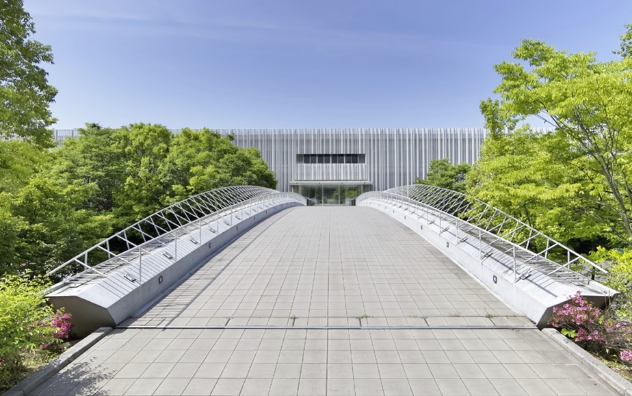Pacific Passages: A PhD student interviews professor Greg Dvorak
Mon, May 16, 2022-
Tags
Pacific Passages: An Interview with Professor Greg Dvorak
In my year and a half as a doctoral student at Waseda, I’ve been grateful to work under the advisement of Greg Dvorak, Professor of Pacific and Asian Culture and History in the School of International Liberal Studies (SILS) and director of the cultural studies study path in the Graduate School of International Culture and Communication Studies (GSICCS). Although our academic interests are centered in different geographies, Professor Dvorak and I share a common ethos in our approach to research and writing. We recently had a brief exchange about his pedagogy and scholarship, international education in Japan, and life in Tokyo.
Note: This interview has been edited for length and clarity.
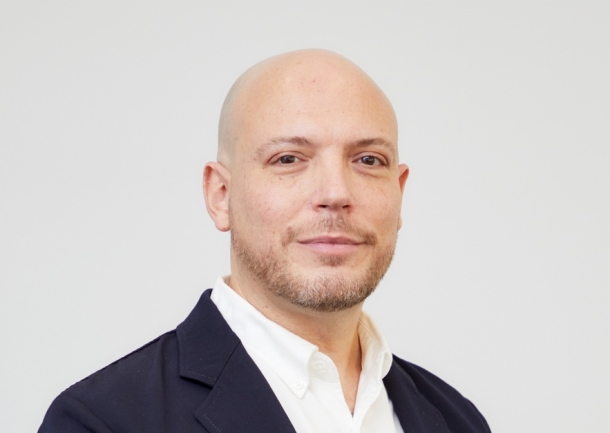
Greg Dvorak, professor at SILS and GSICCS.
Mike Fu: How long have you been teaching at Waseda? What was the path that led you here?
Greg Dvorak: I had wanted to be a student at Waseda University since when I was an exchange student at a Japanese high school in the 1990s, because I was a fan of Murakami Haruki’s writing, and Waseda was the setting for his novel Norwegian Wood. While in college in the U.S., I finally got the chance to study at Waseda through a Japanese government scholarship. I loved it here, but I never imagined that someday I would work here. Having grown up in the Marshall Islands, which was once a colony of both Japan and the United States, I became interested in researching postcolonial Pacific studies. After earning my master’s degree at the University of Hawaiʻi and my Ph.D. at The Australian National University, I returned to Japan and began postdoctoral work at the University of Tokyo, where I also lectured.
Around the same time, I began teaching Pacific studies at Waseda in 2010 as an adjunct lecturer in SILS while I was based at Hitotsubashi University. I was very fortunate in 2017 to be hired as full-time faculty, specializing in cultural studies, Pacific/Asian studies, and gender studies in both the School of International Liberal Studies and the Graduate School of International Culture and Communication Studies. Since then, I have been thrilled to work with very inspiring students at all levels.
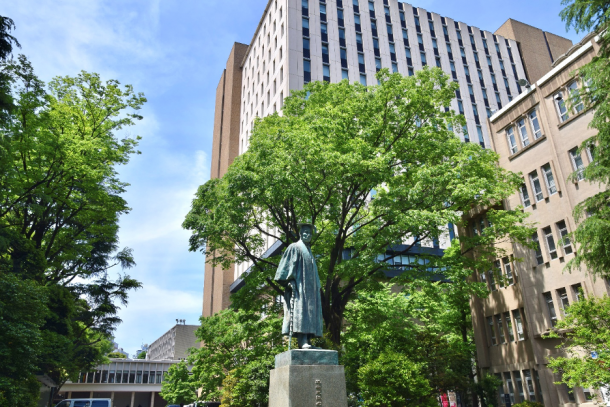
The iconic statue of Shigenobu Okuma, Waseda University’s founder, with Building 11 (home to both SILS and GSICCS) in the background.
MF: Your book Coral and Concrete: Remembering Kwajalein Atoll Between Japan, America, and the Marshall Islands examines the area of the Marshall Islands where you grew up, both its indigenous history and its experience of colonial incursions by Japan and the U.S. in the 20th century. Can you summarize how you came to manifest this project through your academic career and otherwise?
GD: I spent my childhood on the main island of the largest coral atoll in the world called Kwajalein, where the United States has been testing intercontinental ballistic missiles and conducting space surveillance since the Cold War. My father was a civilian engineer who worked for a defense contractor there, and mostly everyone on base was an American living in an artificial U.S. small town in the Pacific. But this was land that had been forcibly taken from indigenous people over successive waves of colonization, including thirty years under Japanese imperialism and what would be over fifty years of American rule. Although it felt like a friendly community on the surface, the displacement of whole generations of Marshall Islanders from that place, plus the erasure of their history and the histories of the Japanese who had been there, struck me as deeply violent and problematic.
As I grew up, I thought more and more about the contradictions of militarism and colonialism, and I wanted to understand Japan’s history in Oceania. Working as a consultant to the Japanese government in my late twenties, I had the extraordinary opportunity to escort the Marshallese delegation to Japan, including the president, and this was my first reconnection with my childhood home. It was this experience that compelled me to go to graduate school to study Pacific studies.
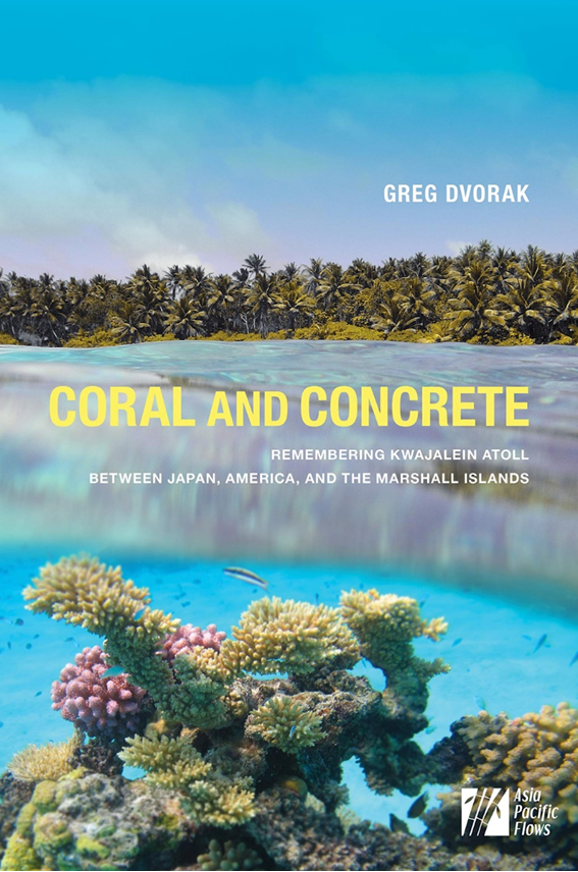
The cover of Coral and Concrete, which was an outgrowth of Professor Dvorak’s doctoral dissertation at the Australian National University.
My book Coral and Concrete, which I published in 2018, is one of the outcomes of that journey. It is on one hand a cultural history of Kwajalein Atoll, but in a deeper sense, it is a book that asks big questions about collective memory and amnesia, and whose stories get recognized as “history” in the first place. I wanted to put human faces on the gendered and racialized violence that accompanies settler colonialism and militarism, as told through the lenses of popular culture, maps, war photography, and indigenous protest movements. Far beyond the Pacific, it is a book that honors indigenous resilience and emphasizes the major role communities in “small” marginalized places all over the world play in bridging the world.
MF: What courses are you currently teaching at SILS and GSICCS? How would you characterize the academic environment for this diverse international student body at a Japanese institution?
GD: Another offshoot of my doctoral and postdoctoral work, even before I published Coral and Concrete, was my development of a curriculum in the School of International Liberal Studies that aimed to dig deep into the cliché of “Asia-Pacific” and teach students to reflect on the violence our superpower countries have caused in the past and to cultivate an archipelago-focused approach to history and society that concentrated on the margins, not the center. As a part of this initiative, I have been teaching two large lecture courses at Waseda since 2010: “Pacific Perspectives on Empire, War, and Globalization” and “The Pacific in the 21st Century World,” both of which urge students to consider their interconnectedness through shared histories of war, nuclear issues, climate change, and many other themes.
When I joined Waseda full-time I also started offering my “Intersections of Gender, Culture, and Identity” course. In addition to these classes, I teach first-year, intermediate, and advanced undergraduate seminars on related topics in cultural studies. In our graduate school, I also mentor master’s and doctoral students in relation to these themes, with occasional special seminars related to history, ethnography, and contemporary art.
MF: What are some of the merits of studying at Waseda as an international student? Alternately, what value is there in pursuing an English-language degree as a Japanese student?
GD: Out of the multitudes of universities based in Japan, I believe Waseda is by far one of the most liberal and diverse schools that also has a solid reputation and rich campus life. It is a spirited school with a robust sense of tradition, but it’s also notably a space where students have historically been able to think creatively and politically, to speak out and express their opinions. For international students who can speak Japanese, Waseda offers an intriguing gateway to the actual diversity and complexities of contemporary Japanese society.
In the parts of Waseda where teaching and research is conducted primarily in English however, we have the best of both worlds in that most of our students and faculty are firmly grounded in Japan and in the wider university, but they also function at a university level in English. This makes it possible for us to welcome students from all over the world, to teach advanced ideas and texts that are relevant overseas, and to think more broadly about Asian Pacific and Japanese society on a more planetary scale.
So international students can study in one of the most fascinating cities on earth, and in one of Tokyo’s most vibrant university environments, while Japanese students can pursue studies that enable them to make sense of Japan and themselves in relation to transnational concepts and knowledge. This serves the dual purpose of enriching Waseda as a site of international exchange and learning while empowering its students to think and collaborate as global citizens.
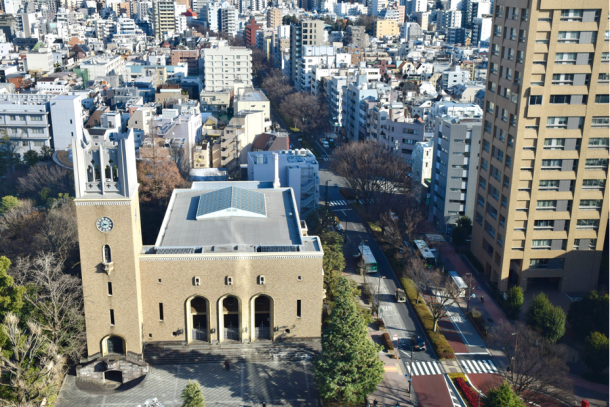
A view of Okuma Auditorium and the university’s surrounding neighborhood in Shinjuku.
MF: How does living in Tokyo facilitate your research and professional activities?
GD: Before living in Tokyo I spent over five years in Kyushu, and I have a strong appreciation for regional and rural, local Japan as a result. But it wasn’t until I started living in Tokyo that I realized what a phenomenal international metropolis it is—even more cosmopolitan than many Western cultural hubs. At the same time, Tokyo can also feel like a warm and friendly small town to me, and I am grateful for the sense of community I feel here in both my home and professional life. Being based in Tokyo enables me on one level to live literally alongside the Pacific Ocean, in proximity to the region I have studied throughout my career, and on another level, to be able to immerse myself in the abundance of contemporary Japanese cultural spheres, including art, history, popular media, and urban life. I have been able to conduct extensive archival and ethnographic research about Japan’s Pacific past here, and I have also had the opportunity to learn from many influential people who congregate in this global hub.
—
Though I’m still at the beginning of my journey in Japan, I wholeheartedly agree with Professor Dvorak about the energizing quality of life in Tokyo and the dynamism of its cultural industries. The progressive atmosphere and diversity of a university like Waseda, too, have helped ease my transition. It’s a privilege to connect with and work alongside so many talented people from around the world. In the end, dialogue across cultures and societies is perhaps more urgent today than ever before.
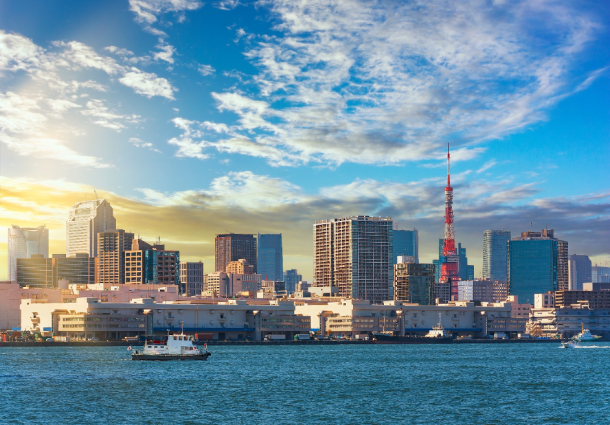
Sunrise over the Tokyo skyline.
*This article was written and contributed by the following student.
Student Contributor
Mike Fu
Graduate School of International Culture and Communication Studies


